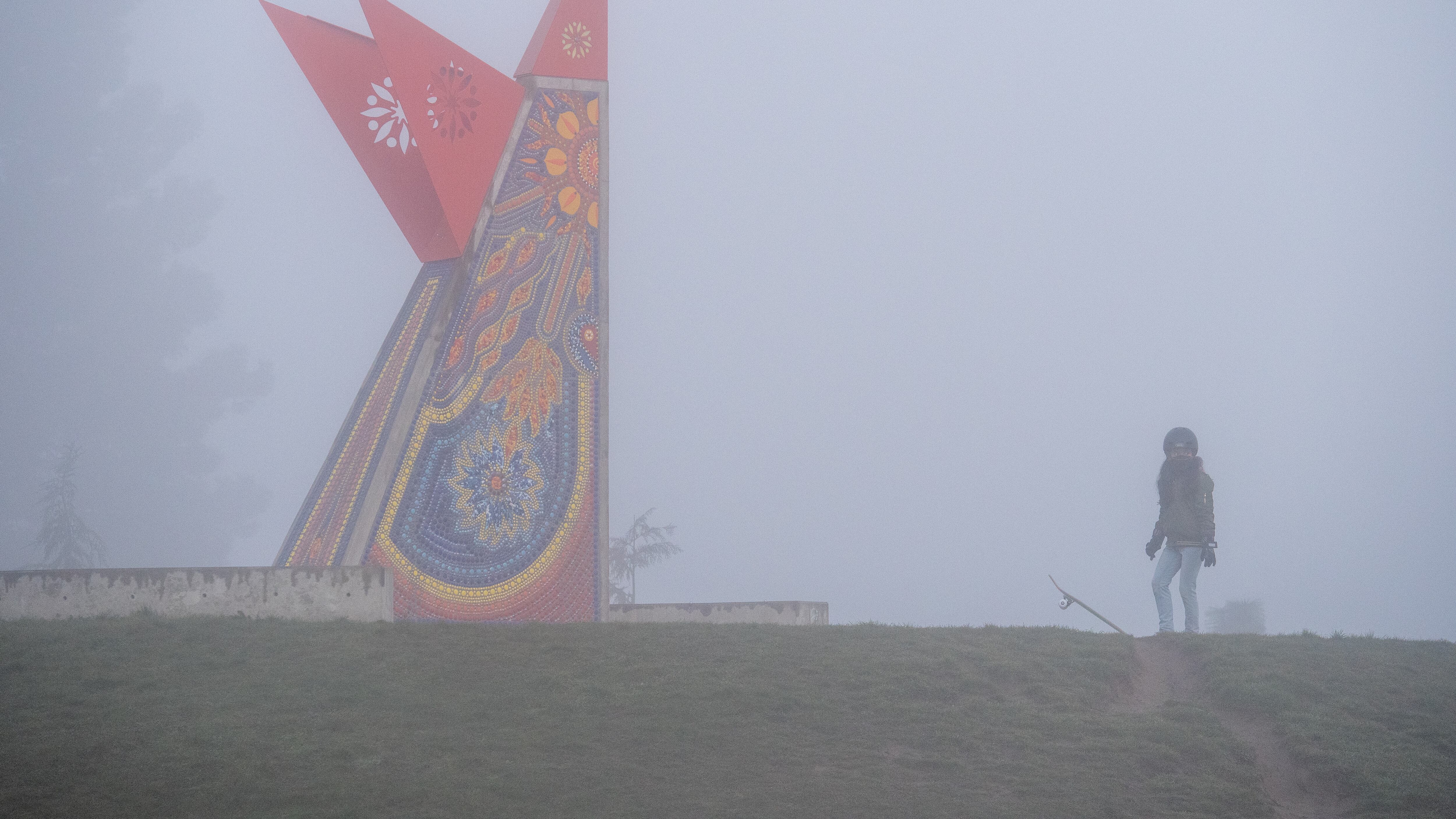Portland’s best view of Mount St. Helens at sunset is from a garbage dump.
Well, technically, Thomas Cully Park hasn’t been a landfill since 1990. For two decades, it sat as another industrial stain off Northeast Killingsworth Street—until Portland Parks & Recreation, in a partnership with Verde and the Let Us Build Cully Park Coalition, cleaned the brownfield and transformed it into a 25-acre city park that opened in 2018. From atop a knoll on a winter’s afternoon, St. Helens presides over a view that encompasses young ponderosa pines, a suspension bridge leading to playground slides, and oil trains gliding past on a railroad line. It’s a vista that shows how much the neighborhood has changed—and how far it still has to go.
Over the past decade, Portland has witnessed an extraordinary civic investment in parkland in its easternmost neighborhoods. Since 2013, the parks bureau has dedicated $84 million to parks east of 82nd Avenue. (Because Cully Park sits at Northeast 72nd Avenue, it isn’t even included in that total.) The result is one of the most tangible achievements by City Hall in decades to make the city more equitable to low-income people of color, who disproportionately live at the eastern edge of Portland.
Spurred by then-City Commissioner Amanda Fritz, city officials decided they had a duty to redress what you might call a parks gap.
“Data from 2017 show that across the city, 1 in 5 households do not have ready access to a park or natural area within a 15-minute walk—that’s 20% of all Portlanders,” says Portland Parks & Rec spokesman Mark Ross. “But in East Portland the discrepancy in access grows to 2 in 5 households.”
The campaign to fix that imbalance has resulted in some works of public architecture that could easily go unnoticed—unless you find yourself on a stroll along Northeast 127th Avenue. There, tucked into a modest residential neighborhood, are 16 acres of paradise: Luuwit View Park. (“Luuwit” is a Chinook name for Mount St. Helens—and the view of the peak here makes me reassess my earlier award for best view.) Nationally renowned firm Skylab Architecture designed the pathways, basketball courts, skate bowl, and a geometric, yellow picnic shelter that looks like a newly landed spaceship.
It’s a landscape you’d expect to see on a revitalized waterfront or the Nike campus—places built to attract and celebrate capital. Instead, it was planted in one of the most neglected parts of the city.
Two years of pandemic have taught us the importance of communal outdoor spaces. Yet East Portland’s parks have mostly landed in the headlines only when they host a gun homicide or a homeless camp. It’s worth taking a moment to consider that the very existence of these places—Gateway Green, Gateway Discovery Park, Leach Botanical Garden—is one of the few signs that Portland is headed in the right direction: east.
See all 25 Reasons to Love Portland here!

